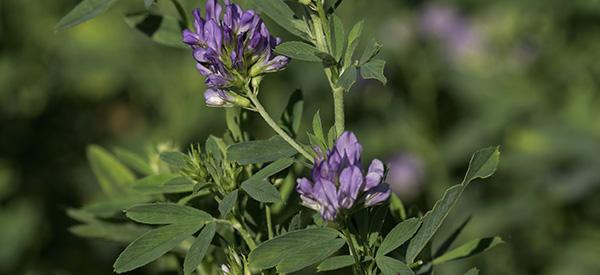
Alfalfa
Alfalfa (Medicago sativa), or purple medick, is a perennial legume and a flowering plant that grows in the prairies with temperate climates. The young plant looks similar to clover. However, it grows elongated leaves and purple flowers as it matures. It is popularly cultivated as fodder for grazing flocks, but also holds a notable contribution as herbal medicine. Sprouted alfalfa seeds are an excellent addition to salads and wraps. It also adds texture and distinct flavor to foods. This invasive herb is beneficial to most plant growers because of its ability to improve the nitrogen fertility in the soil. It may further help prevent soil erosion owing to its deep root system.
When it comes to foraging plants, alfalfa is one of the most cultivated plants and is considered the Queen of Forages. People today cultivate them for their leaves, seeds, and sprouts. Alfalfa seed sprouts are available in many grocery stores around the world.
Short History Of Alfalfa
 Alfalfa is a plant native to South-central Asia, specifically in ancient Iran. It was widely used as fodder for the horses that were brought from Central Asia. This wild and indigenous plant spread to Arabia where its name “alfalfa” was coined, which translates to “the best forage.” I
Alfalfa is a plant native to South-central Asia, specifically in ancient Iran. It was widely used as fodder for the horses that were brought from Central Asia. This wild and indigenous plant spread to Arabia where its name “alfalfa” was coined, which translates to “the best forage.” I
People also began to explore other uses of the alfalfa, not just as fodder. The tender shoots and leaves of the plant were utilized as vegetables. The seeds were ground and used as flour, while sprouts were added to salads and soups. The United States, Australia, and New Zealand are large consumers of alfalfa sprouts as a salad ingredient.
Traditional medicine also makes use of the plant as tea or tonic for various ailments. It is used as a treatment for arthritis, diabetes, hay fever, and digestive problems. It is also a diuretic or water pill for improving kidney and bladder conditions.
To this day, many people are consuming alfalfa sprouts with their many vitamins, fiber, and mineral content. They are also commercially processed into an herbal supplement form.
Where The Plant Is Found
Alfalfa is tolerant to many climates and thrives almost anywhere – from the arid deserts, cold plains, and rich temperate regions. Presently, the United States is the largest producer of alfalfa in the world. California, South Dakota, and Wisconsin are the states that hold the widest cultivation of the herb. Alfalfa is the third most valuable crop in the United States as of 2017 data released by the National Agricultural Statistics Service (NASS) of the US Department of Agriculture.
Alfalfa plants adapt pretty well in both man-made and disturbed habitats. They also flourished in open meadows and fields with wide distribution across many regions in the United States. In fact, it is a widely known plant in every state in the US. However, as they are almost hardy for growing anywhere, leaf and root diseases may delimit their proliferation. Some areas in the southeastern United States may not grow alfalfa well like in the north and northwestern parts.
Related: The Complete Map of Edible Plants: Find Out What You Have in Your Area! (Video)
How To Identify Alfalfa
Alfalfa is a member of the Fabaceae family of peas. It is also known as lucerne or purple medic with a distinguishing blue to purple flower. Young alfalfa resembles its close family, the sweet clover with their tiny serrated leaves. But as they mature, alfalfa leaves elongate, giving it its distinct characteristic.
- Leaf. Mature alfalfa has three narrow leaflets that are alternate and scattered along the stem. These leaflets are ovate with a symmetrical base that tapers into serrated edges. It is green with a dull and slightly shiny appearance.

- Flower. Alfalfa bears purple flowers, and some varieties may either have a blue or white bloom. They grow on a one-sided cluster with about ten to twenty leguminous flowers each. The petals and sepals of the alfalfa flowers are joined in a cup or tube. These petals look thin and delicate. They are oblong-shaped with rounded ends.
- Roots. Like the legumes of the Fabaceae family, alfalfa has deep and extensive taproots. It can grow up to 3 up to 15 meters below the soil, making them resilient to drought and excellent for soil erosion prevention. A tough crown with small buds will eventually grow on the top of the root that enables it to re-grow after harvest.
- Seeds. Small seeds that are shiny and kidney-shaped are produced from the alfalfa flowers. Its color ranges from yellow to greenish-yellow and browns as it ages.
- Stems. The alfalfa stems are upright and angled upward. It is round at the bottom and roughly square-shaped at the top and can grow from 30 to 100 cm tall.
Related: Plant Identification Guide – 400 Wild Plants That You Can Forage For (Video)
Alfalfa has many varieties and brands that are a product of many years of research and development. There are dormant and non-dormant varieties that were engineered for better adaptation within the region they are cultivated. There are also genetically modified alfalfa varieties but were regulated by the USDA because of their environmental impact.
How To Grow Alfalfa
The alfalfa plant can adapt well to various environments and growing conditions. It prefers full sunlight and well-draining soil as too much wetness and moisture may cause mold growth. They can easily grow and propagate through cuttings or seeds.
Growing Alfalfa from Seeds
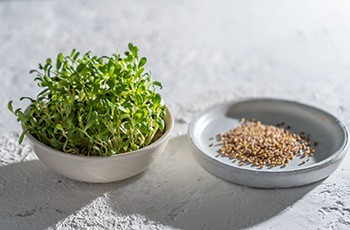 You can easily purchase alfalfa seeds from the grocery or any feed supply shop. If you live in regions with a cooler climate, you can grow your alfalfa plant in spring. For milder regions, fall is the best time for sowing alfalfa seeds.
You can easily purchase alfalfa seeds from the grocery or any feed supply shop. If you live in regions with a cooler climate, you can grow your alfalfa plant in spring. For milder regions, fall is the best time for sowing alfalfa seeds.
Prepare the seedbed by removing debris and moist the soil at 1 to 3 inches below the planting surface. Moisture at the surface area is not always necessary and an inch of rain is enough to germinate the seeds.
Sow the seeds at only about half an inch deep, two to three inches apart. If planting directly on a field, sprinkle seeds evenly into the soil at about ¼ pounds for every 25 square feet. Alfalfa will sprout sometimes in seven to ten days after sowing. When the seedlings are about 6 to 12 inches, thin them to avoid overcrowding.
If you are growing the plant as forage or decoration, there is no need for thinning the field. Let the plants thrive and cover the ground.
Related: 10 Plants That You Should Never Plant Together (Video)
Growing Alfalfa from Cuttings
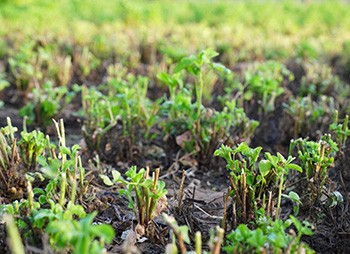 Propagating alfalfa from cuttings is ideal if you want only a small patch of ground for it to cover. Cuttings are also more stable if you already have a healthy growth of established plants available. Planting the alfalfa cuttings is best done at least a week before the frost.
Propagating alfalfa from cuttings is ideal if you want only a small patch of ground for it to cover. Cuttings are also more stable if you already have a healthy growth of established plants available. Planting the alfalfa cuttings is best done at least a week before the frost.
Select healthy plants to cut that are no less than six inches tall. Trim it two inches from the soil. Alfalfa has tough crowns on top of its roots that will easily re-grow once the stem is cut down. Trim the leaves off the cutting leaving only three leaves at the top. Soak the cutting overnight in a glass of water.
Plant the cuttings in a shallow well-draining container with pre-moistened potting soil. Space the cuttings at about two inches apart and place the container near an area with filtered sunlight. Moisten the soil but do not make it soggy.
Transplant the new alfalfa plants when new leaves are starting to grow.
Proper Care of the Alfalfa Plants
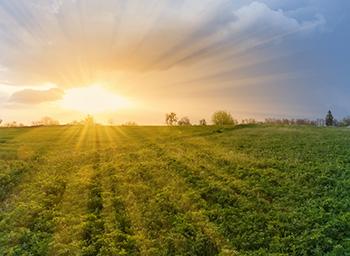
Alfalfa is a low-maintenance plant but it will thrive better in the following conditions:
- Give it plenty of full sun.
- A well-draining soil with a pH level between 6.8 to 7.5.
- Keep the plants free of weed until they are at least four inches tall.
- Give them supplementary irrigation only when the climate is too dry.
How To Harvest Alfalfa
If you grow the seeds merely for food and your salad greens, harvest the sprouts that emerge within 7 to 10 days. For your tea, gather the leaves when they are dry and let them air dry for a day before storing.
When growing alfalfa as livestock feeds, it is necessary to time the harvest before the flowering stage. Mature plants are harder to digest, so you should bundle the plants before the early bloom stage. Gather the crop only when they are dry and there is no danger of rain over the day. Moisture encourages the growth of molds that will damage the crop.
In large plantations, harvesting often begins by cutting the alfalfa using a swather and arranging them in rows to dry. Sometimes, a mower-conditioner is used to hasten the drying process. A tractor will then collect the dried alfalfa and bundle them into bales as hay.
Related: I Stopped Spending Money At The Pharmacy By Growing These 10 Plants (Video)
What Alfalfa Is Good For And Natural Remedies Made From It
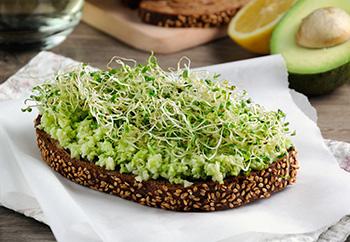
The alfalfa leaves are rich in minerals and amino acids, which promote many medicinal attributes. Many people take alfalfa because of its high vitamin A, C, E, and K4 content. It also has potassium, calcium, phosphorus, and iron. All of these are essential for the body’s proper functioning.
Alfalfa is beneficial in promoting normal blood clotting due to its vitamin K content. Vitamin K serves as a natural anticoagulant. It can also purify the blood and help in detoxifying the body. This herb is highly effective in the treatment of the following conditions:
- Water retention
- Arthritis

- Laryngitis
- Anemia
- Acid reflux
- Alcoholism
- Kidney conditions
- Diabetes
- Upset stomach
- Bleeding disorder
What Parts Of Plants Are Used For Remedies
Alfalfa sprouts, in no doubt, are microgreens that are a tasty addition to foods. Its tender leaves and young shoots are edible and carry many nutritional values. All the above-ground parts of the herb are used for various natural remedies. Its leaves can be consumed either dry or as a fresh extract for treating many ailments. But while young sprouts are palatable, established leaves have a bitter tang in them.
Alfalfa Tincture with Vinegar
Ingredients:
- Dried alfalfa leaves (or stems)
- Unfiltered organic apple cider vinegar
Steps:
- Fill the jar halfway with the chopped herbs.

- Fill it with vinegar leaving about an inch of space from the brim. Take note that using vinegar as a menstruum is not as potent as using alcohol. However, it is a nice alternative for those people who are avoiding alcohol and for little children as well. Vinegar is also the most suitable menstruum for herbs such as alfalfa because it allows the best possible extraction of nutrients.

- Before closing the lid, put parchment paper in between the metal lid and the glass jar. This protects the tincture from any residues of metal corrosion that might happen due to the vinegar’s acidity.

- Properly label the jar with the herb and date of infusion.

- Shake the infusion and make sure that all herbs are soaked. Leave the mixture to infuse in a cool and dry place, away from direct sunlight. Regularly shake the tincture daily for six weeks. After at least six weeks, strain the infusion into a glass container.
How to Use the Remedy
Herbs have unique dosing and schedule depending on their concentration. You can take 3 to 5 drops of the tincture diluted in a glass of water twice or thrice a day or as prescribed by your physician. It is best to consult a qualified herbalist for the proper dosage, especially if you have any underlying medical condition. Vinegar-infused tinctures have a shelf-life from one to two years.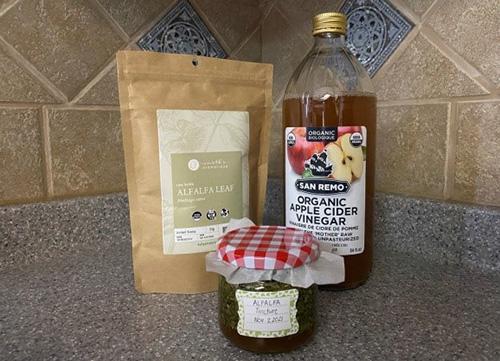
Related: Ancient Japanese Tonic Melts 54 LBS Of Fat (Video)
What Plants Resemble Alfalfa
| Feature | Alfalfa (Medicago sativa) | Sweet Clover (Melilotus officinalis) |
|---|---|---|
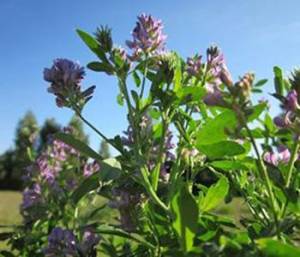 | 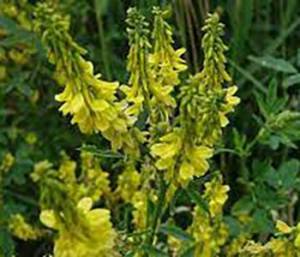 |
|
| Size | 1 to 3 feet | 4 to 6 feet |
| Leaves | Alternate; long, ovate, with serrated tip; trifoliolate when young | Alternate; oblong or obovate with fine-tooth; trifoliolate (three-leaf) |
| Flowers | One-sided cluster; purple, blue or white-colored | Yellow; densely crowded at the top |
| Stem/Trunk | Round to angular; upright | More or less erect and angular; sometimes sprawl on the ground |
| Scent | Pungent and slightly earthy scent | Sweet scent |
Warnings And Cautions
All herbs, although natural, should be consumed in moderation. Alfalfa is mostly safe in adults but is possibly unsafe in pregnant and breastfeeding women.
Alfalfa may also decrease the effectiveness of estrogen pills if taken in large amounts. Excessive use of the herb can decrease potassium in the blood or cause lupus disorder.
The plant may also cause kidney transplant rejection based on one study. The immune-boosting property of alfalfa may have an effect on the anti-rejection drug used.
If you are taking medications for your health condition, consult with your health practitioner before using alfalfa supplements. It may interact with drugs and enhance its effect that can only worsen the condition.
You may also like:
The Backyard Plant that Keeps Your Heart Young
DIY Colon Detox with Ingredients You Have in Your Kitchen Right Now

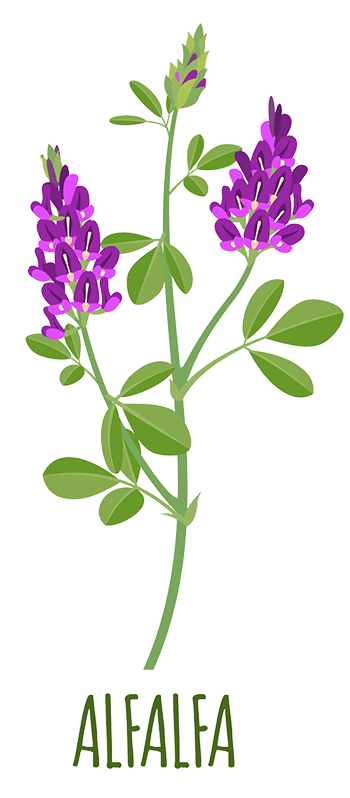
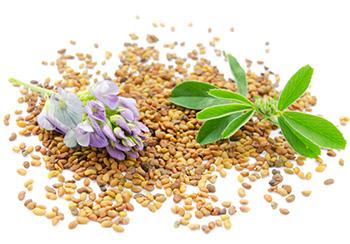
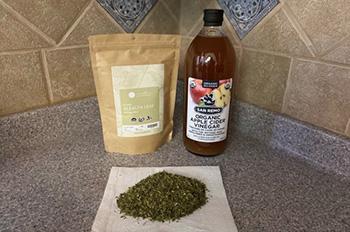
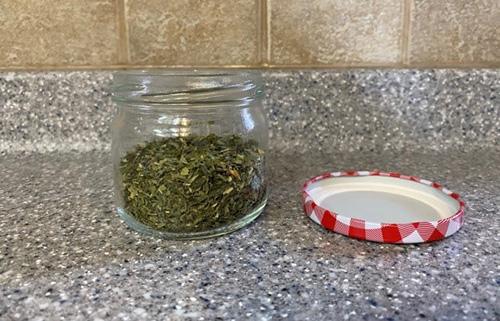
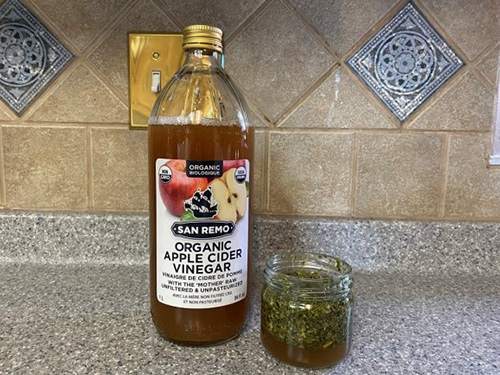
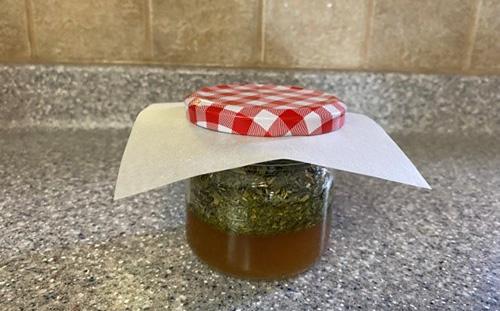
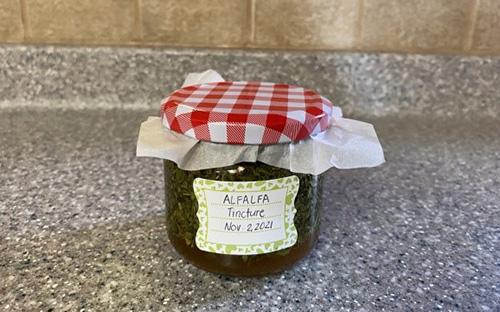
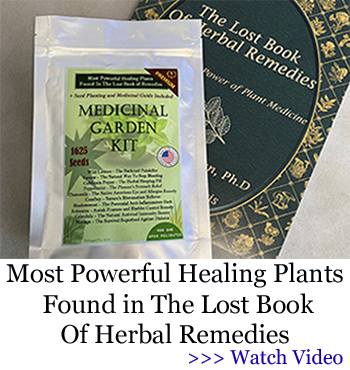
Does Alfalfa grow in western parts of Europe eg Ireland 🇮🇪 🤔 It looks a wee bit like lupins but different 🤔.
Kind regards
Mark.
Hi Mark,
Yes, you may find Alfalfa in Ireland as well. However, Lucerne (or luzerne) is the name for alfalfa in Britain, Australia, France, Germany, and a number of other countries.
Many blessings and good health!
It is sometimes called for in tea recipes. is making tea with alfalfa a good way to consume it?
Hi Janice,
Tea from alfalfa leaves is made by steeping 1 teaspoon of alfalfa leaves in 2 cups of boiling water for approximately 10 minutes. The tea is bland, so adding flavoring may enhance the taste.
Talk to your doctor about taking alfalfa tea if you are taking other medications or supplements.
Many blessings and good health!
I bought the book, and then I bought another one to give to our adult son. Wonderful. I really appreciate these emailed articles, which almost always get my attention.
Hi Charles,
Thank you for your interest in our work.
We’re delighted that you like our emails and that you were able to find what you were looking for.
Many blessings and good health!
I appreciate all that you do in sharing and educating us.
What is your thought about microdose Somatropin in helping boost HGH levels?
Hi Kim,
This blog provides general information and discussions about health and related subjects. However, we cannot diagnose conditions, provide second opinions or make specific treatment recommendations through this blog or website.
Thank you for your understanding and continuous support.
Many blessings and good health!
I wanted to order The home doctor but I was unable to order it as I do not live in the USA i tried on AMAZON they do not have it. Any ideas how to get it roseyorke@liveco.uk
Hi Rose,
Thank you for your interest in our work.
I am sorry about this, however, The Home Doctor can be purchased in digital copy only at the moment, if you live outside of the US.
Many blessings and good health!
With Alfalfa, having such a deep root system it seems planting it on a bank or hillside subject to erosion, might be helpful. And, many moons ago, I had a persistent sinus infection. Alfalfa tablets cleared it right up.
Shaklee makes an alfalfa tab that taking ten of them three times a day with your meals would, in three to five days bring on what was called the alfalfa blues! I don’t remember much snot, but I couldn’t believe how much liquid could flow out of my sinuses it got to the point of putting a paper towel one up each nostril, now I’m no dr. I have no idea if this was dangerous, but I have a typical Italian nose, on top of that I spent the years of 8 to 16 as a competitive swimmer with all that chlorine and a ph level that often times led people to call me Christmas tree as my eyes were red and my hair was green and my sinuses were always stuffed. Anyway one needs at least a week off once the flow stops say four to seven days you tapper down on the number per meal until you get the sniffles but not too long a time I was down to five per meal! Probably six months latter I hardly ever took them again. I can say that the next forty some years of my life I’ve been a normal nose breather! I also never met a dog that wouldn’t eatShaklee’s alfalfa tabs right off the palm of my hand after one sniff. I don’t know why I felt I needed to share that with you all but I’d gotten pretty used to being miserable stuffed up most of the time til my sister introduced me to alfalfa all those decades ago I’ve met plenty of mouth breathers I don’t think a one of them believed how I was cured of it, I guess that’s why I had to tell the story here!